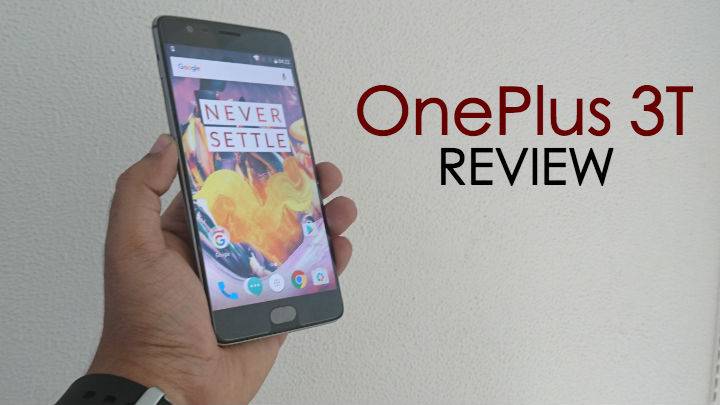TechRadar Verdict
While the OnePlus 3T might not be a flagship killer anymore, it is still a damn good Android flagship smartphone.
Pros
- +
Crisp and vivid display
- +
Great battery life
- +
Much improved front camera
- +
Sleek and svelte looks
- +
Oxygen OS
Cons
- -
Average rear camera
- -
No QuadHD display
- -
Pricing close to flagships
- -
No expandable storage
Why you can trust TechRadar
Design 4/5
Features 4/5
Performance 4.5/5
Usability 4.5/5
Value 4/5
OnePlus ushered in the era of 'affordable flagships' (or flagship killers as some people like to call them) with the original OnePlus making way for the likes of the Xiaomi Mi5, the LeEco Le Max 2 and many many more.
While the OnePlus 2 was mediocre at best, the critically acclaimed OnePlus 3 was by far one of the best smartphones of 2016. In fact, we gave it a 4.5/5 star rating in our official review .
The OnePlus 3T thus has rather big shoes to fill. It is an incremental update over its predecessor, with a bigger battery, a better front facing camera, a speedier processor and some software tweaks.
Can it improve upon the OnePlus 3? Does the OnePlus 3T have what it takes to compete with the latest and greatest from Samsung, Apple and Sony? Let’s find out!
Design: Gorgeous, yet again
The OnePlus 3T looks almost identical to the OnePlus 3 and feels incredibly premium with it's metal uni-body construction.
Cut from a single slab of aluminum, the smartphone looks sleek and svelte, especially in the new Gumetal Grey colour. It will also be available in a soft gold finish which will be launched very soon.
While the design is nothing new, with echoes of Samsung's S7, iPhone 6s/7 and the recent wave of Chinese metal smartphones, it looks very classy and sophisticated.
Sign up for breaking news, reviews, opinion, top tech deals, and more.
The only 'sore' point of the design has to be the camera that sticks out of the back which breaks the flow of the design.
The front is an all-glass affair protected by Gorilla Glass 4, with the front camera, a notification LED, the proximity sensor, ambient light sensor and the earpiece on the top and the capacitive key for back and recent apps along with the physical home button underneath the display.
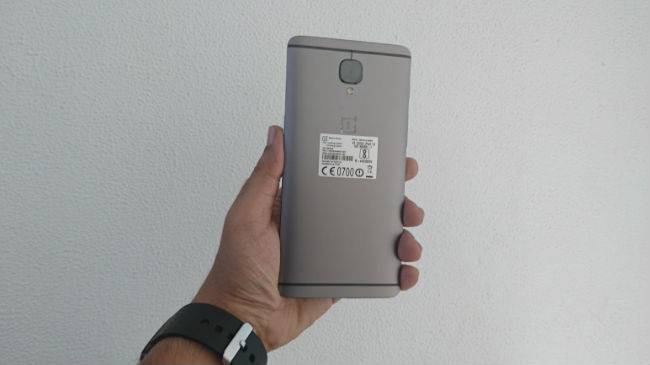
The left side of the device has the volume and OnePlus's extremely useful notification slider which allows you to switch between 'all notifications', 'priority notifications' and 'silent'. This is a feature most iPhone users will be used to which I wish more Android manufacturers would adapt.
The capacitive keys are responsive and can be customised in the settings menu, enabling you to swap them around or perform certain extra functions with a hold action. They can also be disabled entirely and related with a set of software keys.
The right edge has the power key and the dual nanoSim slot, the top is bare while the bottom has the speaker, primary microphone, USB type-C slot and the 3.5mm headphone jack. Yes! Unlike the iPhone 7, the headphone jack is alive and well.
All buttons are responsive, ergonomically placed and have a decent amount of feedback.
The fingerprint scanner is integrated into the home button. Is it an improvement over the OnePlus 3? Not really, but it is very fast and accurate.
Display: Crisp and vivid
Unchanged from the OnePlus 3, the OnePlus 3T has a 5.5-inch fullHD optic AMOLED display, with a resolution of 1920x1080 pixels. The display is protected by Gorilla Glass 4 and has a pixel density of 401ppi.
In the day and age of 2K displays, a 1080p display at this price point is a little disappointing, especially considering the 128GB model now costs Rs 34,999. Competition like HTC, Samsung, LG, all have moved on to QHD displays. Heck, even the LeEco has packed a 2K display in the LeMax 2.
However, 1080p displays are fine for day to day use and strike a great compromise between battery life and usability. If you compare a Galaxy S7 Edge and the OnePlus 3T side by side, you will be able to discern the difference, but individually, the 1080p display is more that adequate.

Now, what is this "Optic" AMOLED technology that OnePlus is talking about? Well, it is an AMOLED panel that OnePlus has tuned for greater emphasis on blacks and reds, which OnePlus believes gives a better brewing experience.
The display has good viewing angles and is also easily discernible in bright sunlight, thanks to it's dual-polarising filter. Another handy feature on the OnePlus 3 is its proximity display. Wave your hand over the front-facing camera when the screen is off and it'll illuminate, showing you the time, and any notifications you have, in black and white.
All in all the display is par for the course and offers punchy colors and decent viewing angles. However, some people will be disappointed that OnePlus didn't update the display to a 2K panel.
Cameras: Better selfies
The OnePlus 3T has a 16MP rear camera with a Sony IMX 298 sensor, PDAF autofocus and an aperture of f/2.0. It can record 4K videos at 30 fps as well as 720p slow motion videos at 120 fps.
The front camera of the OnePlus 3T has been bumped up from an 8MP sensor to a 16MP Samsung 3P8Sp sensor with an aperture of f/1.0 and a pixel size of 1.0 microns.
On the software front, the camera has seen some tweaks such as an improved manual mode which will allow you to control the white balance, ISO, shutter speed and so on and RAW image support.
The front facing camera is a great improvement over the OnePlus 3. It produces crisp and clear images and the wide angle lens helps cram all your friends in the frame when taking a selfie. Surprisingly, even in low light situations, it produces decent images with hardly any noise.
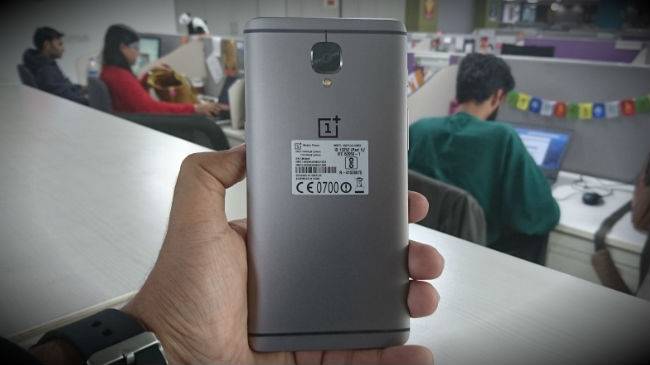
The rear 16MP sensor is the same as the OnePlus 3. While not as good as the camera on the S7 or the iPhone 7, it still produced decent results. In well lit situations, the images are sharp, clear and vibrant, although detailing is bit lacking. Obviously the AMOLED panel does help here, making images look very saturated and vibrant, but even when transferred to a computer, the images looked decent enough.
The OnePlus 3T can shoot 4K videos, and the end results are good, if not great. The OIS helps stabilise videos very well, and the OnePlus is great for capturing the occasional video footage.
What is great is that OnePlus has fixed the focus issues I had with the OnePlus 3, which really struggled to keep up at times. The 3T in comparison is very quick to focus and process images.
All in all, the OnePlus 3T has a superb front camera, which is vastly improved from the OnePlus 3. The problem here is that while the rear camera was adequate on the OnePlus 3, the smartphone world has moved on in the four months between the 3 and 3T.
In a day and age where smartphones like the Huwaei Honor 8 and the iPhone 7 are packing in dual cameras, OnePlus could have done with a rear camera upgrade as well.
Software: 99% stock Android
The OnePlus 3T runs on the latest version of OxygenOS based on Android 6.0.1 Marshmallow. Oxygen OS was developed in-house by OnePlus after the ill-fated partnership with Cyanogen on the OnePlus One crashed and burned.
There is No Nougat out of the box but OnePlus has just rolled out the Android 7.0 update in beta and the final release will follow soon.
Where Oxygen OS succeeds dramatically is retaining the soul of stock Android. All the tinkering done by OnePlus only add to the Android experience, and don't take away anything.
This is a breath of fresh air amongst a sea of handsets running extremely customised and skewed skins atop Android, like Samsung's TouchWiz or LeEco's EUI. Personally, after reviewing so many smartphones with such distorted versions of Android that they fail to feel like Android smartphones altogether, Oxygen OS comes off as a relief.
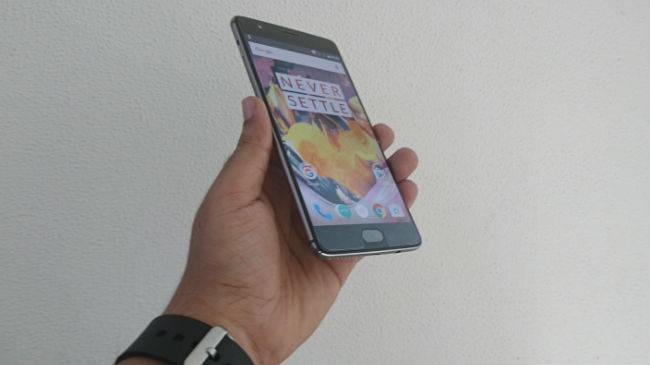
Oxygen OS also has support for certain gestures, like double tap to wake, the ability to draw an 'O' on the display to turn on the camera, a 'V' for the flashlight and more. Thankfully, these gestures work flawlessly and will actually help increase your productivity rather than being just gimmicks.
The OnePlus 3T comes with a new file management system which the company claims will dramatically speed up app load times.
While I was a bit skeptical at first, the enhancements really do work, with app load times significantly reduced over the OnePlus 3. We opened Subway Surfers on both smartphones, and the 3T took almost 30 seconds less to load up the game.
The new circular design ethos looks refreshing and in my personal opinion, looks better than the Pixel launcher on the Google Pixel, which has a similar circular design language.
Oxygen OS has always been one of my favourite Android skins and the new updates make it look and perform even better while retaining the essence of stock Android.
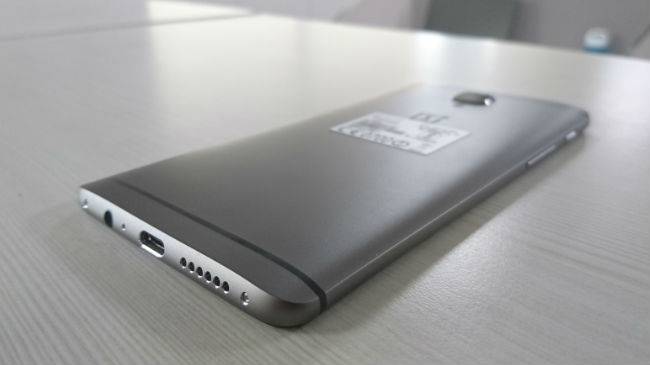
Connectivity
On the connectivity front, the OnePlus 3T supports 4G LTE, 3G, GPRS/EDGE, Wi-Fi 802.11 a/b/g/n/c, NFC, GPS/A-GPS, GLONASS, USB Type C for charging and data transfer, dualSIM and Bluetooth 4.2.
Hardware/Performance: Top of the line specs
This is where the OnePlus 3T sprints ahead of its predecessor.
It comes with Qualcomm’s latest Snapdragon 821 processor (as compared to the 820 in the OP3) clocked at 2.35GHz, the Adreno 530 GPU, 6GB of DDR4 RAM and a 3,400mAh battery.
So do these improvements translate to real life use? Well, both yes and no.
The processor bump is not very noticeable in day to day use. The fact of the matter is that the OnePlus 3 was already an extremely powerful phone and the OnePlus 3T doesn’t offer any noticeable difference.
Just like the OnePlus 3, it screams through tasks like web browsing, social media use, taking the occasional selfie and so on. It even handles intensive tasks like video editing and 4K video recording with aplomb.
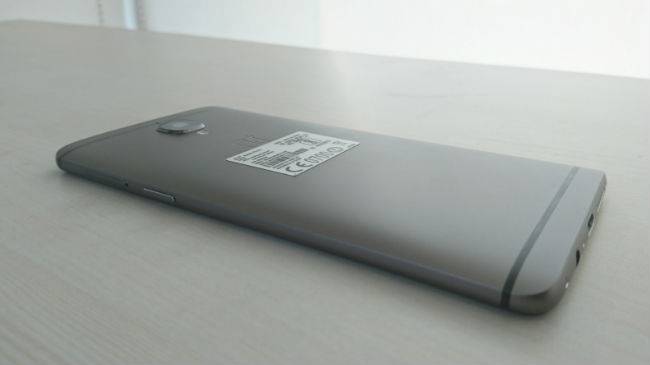
It also runs intensive games like Asphalt 8, Real Racing 3 and Mortal Combat effortlessly. What is surprising is that unlike most flagships these days, the OnePlus 3T doesn't overheat much, even when you push the device.
The biggest improvement over the OnePlus 3 is in RAM management. OnePlus has definitely learned its lesson after the RAM management debacle on the OnePlus 3.
OnePlus has optimised the smartphone to make full and efficient use of the 6GB RAM and it shows in speedy app launch times, less reloading of apps and much smoother multi-tasking. There are no signs of the app crashes and random lags we experienced with the OnePlus 3.
Battery Life: Much improved
The OnePlus 3T comes with a 3,400mAh battery as compared to the 3,000mAh unit found on the OnePlus 3. Kudos to OnePlus for cramming a bigger battery in the exact same chassis without adding any bulk.
While the OnePlus 3 struggled to make it through the end of the day, the extra 400mAh in the 3T gives you just the extra oomph needed to make it through a day easily.
While using it as my daily driver, the smartphone managed to make it to the end of the day with about 15 to 20 percent of battery remaining. That too with quite heavy usage - Bluetooth and mobile data always on, tons of calls, messages and web use throughout the day.
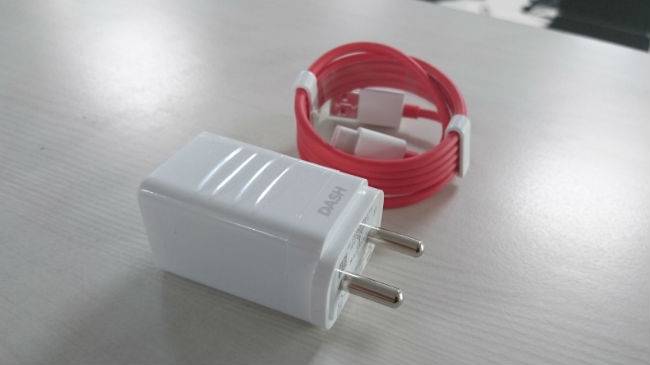
The handset also comes with OnePlus’s ‘Dash Charge’ technology, which the company claims can give the phone enough juice to last a day with just a 30 minutes charge.
Does it really live up to that tall claim? Well, the answer is a resounding yes. While many other manufacturers now support Qualcomm's QuickCharge 3.0 technology, OnePlus claims that it's DashCharge is better. And well, it is.
The Device charged upto 100% in little over an hour, with a 61% charge in just 30 minutes.
Pricing: Inching closer to flagship territory
The pricing for the OnePlus 3T is as follows:
64GB: Rs 29,999
128GB: Rs 34,999
The OnePlus 3T 64GB variant has been priced quite aggressively, at just a Rs 2,000 premium over its predecessor.
The pricing of the 128GB variant is a bit steep but might be worth it for those who store a lot of apps and media on their phones as the OnePlus 3T does not come with any expandable storage support.

Verdict: A great update to an already brilliant smartphone
The OnePlus 3T is a superb Android smartphone in almost all aspects. It looks brilliant, has stellar performance, much improved battery life and a fantastic font camera.
Oxygen OS is also a great Android skin which manages to retain the soul of stock Android. New software tweaks that improve app loading times make the experience even better.
Where the OnePlus 3T disappoints however is the rear camera. It is not a bad unit by any means, but has been usurped by competition in the 4 months between the OnePlus 3 and 3T.
For those who already have a OnePlus 3, upgrading to the OnePlus 3T makes no sense. However, for those looking for a new Android smartphone, the OnePlus 3T makes for a compelling buy.
The problem is that OnePlus started as a company out to make flagship killers and now with the OnePlus 3T 128GB available for Rs 34,999, the pricing has started reaching traditional flagship territory.

Features Writer at NDTV Gadgets 360. Past - Sub Editor at India Today Tech, Content Writer at TechRadar India.
A PG diploma holder in English Journalism from IIMC, New Delhi. Avid tech enthusiast, cinema buff, voracious reader and Formula 1 fanatic.
